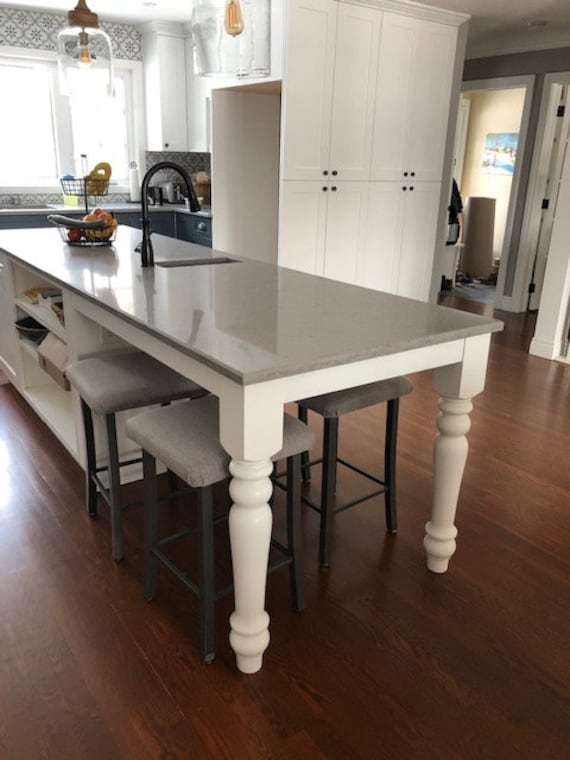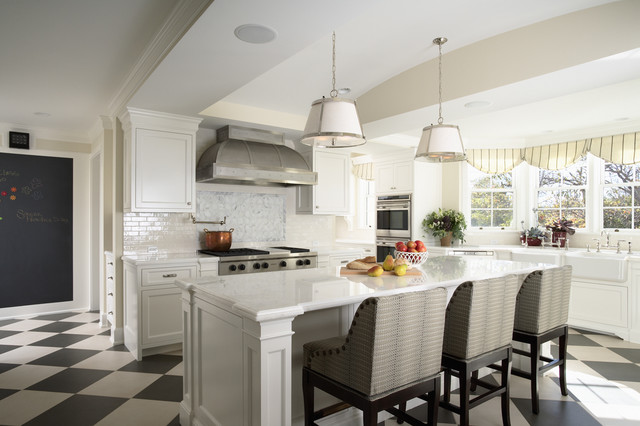Essential Factors to Take Into Consideration When Choosing Legs For Cooking Area Island
Choosing the proper legs for a kitchen island entails a mindful analysis of several elements that can substantially influence both capability and aesthetic allure. As we check out these components, it becomes clear that each decision can have far-ranging implications for the general kitchen area experience.
Product Options
When selecting legs for a kitchen area island, understanding the different material choices is essential for accomplishing both aesthetic appeal and structural stability (Legs For Kitchen Island). The option of product considerably affects not just the toughness of the island yet likewise its total design and functionality
Timber is a preferred selection, supplying heat and convenience. Strong woods, such as oak or maple, supply stamina and can be stained or repainted to match the kitchen design. Steel legs, commonly made from stainless steel or wrought iron, contribute a modern-day and commercial feeling while guaranteeing resilience and security. These products are immune to use and can sustain considerable weight, making them optimal for bigger islands.
One more choice is crafted products, like MDF or plywood, which can be a lot more cost-effective while still supplying a series of surfaces. Nevertheless, they might not provide the exact same degree of security as solid wood or steel. Products such as acrylic or glass can develop a contemporary appearance, though they may require extra support to make certain security.
Eventually, the choice of material for kitchen island legs must align with the wanted functionality and the general theme of the kitchen.
Design And Style

When considering style, the shape and finish of the legs are essential. Conical legs can offer a sense of lightness and elegance, while thicker, more durable legs can communicate toughness and security. Furthermore, the finish-- be it painted, stained, or all-natural-- should match the kitchen cabinetry and kitchen counter products to produce a unified appearance.
Moreover, the layout of the legs can additionally show individual taste. Custom or decorative legs, such as those including complex carvings or unique geometric forms, can work as focal factors, including personality and character to the cooking area. Eventually, the ideal selection will not just improve functionality yet likewise boost the aesthetic allure, making the kitchen island a standout feature of the home.
Height Factors To Consider
Selecting the proper height for kitchen area island legs is important, as it straight affects both capability and convenience. The standard elevation for a kitchen island typically ranges from 36 to 42 inches, lining up with common counter top heights. A 36-inch elevation is perfect for cooking and cooking, permitting comfortable use cooking area home appliances and devices. Alternatively, a height of 42 inches is usually favored for islands intended for bar seating, accommodating taller feceses and offering a casual dining experience.

It is additionally vital to account for customers' preferences and elevations. Customizing the elevation can make sure a comfy experience for all family members, making the kitchen island a much more pleasurable and useful area.
Weight Assistance
Ensuring ample weight assistance for kitchen area island legs is essential for both safety and performance. The kitchen island typically offers numerous functions, including food preparation, dining, and extra storage, requiring a durable support framework. When selecting legs, it is vital to think about the general weight capability called for based on the island's planned usage and the products that will certainly be positioned on it.
The option of material for the legs plays a considerable role in their weight-bearing capacities. Solid wood, steel, and sturdy compounds generally supply superior stamina contrasted to lighter products. Additionally, the design of the legs-- whether they are directly, tapered, or have a pedestal type-- can affect their ability to distribute weight properly throughout the structure.
Always seek advice from the manufacturer's specifications relating to lots limits to make sure that the legs can maintain the intended weight without jeopardizing safety. In summary, picking kitchen island legs with sufficient weight assistance is vital for creating a risk-free and functional culinary area.
Installment and Maintenance
Correct installation and maintenance of cooking area island legs are crucial for guaranteeing longevity and security. This usually involves securing the legs to the island base making use of suitable bolts, guaranteeing that the legs are degree and straightened.
When installed, regular maintenance is required to preserve the integrity and look of the legs - Legs For Kitchen Island. For wooden legs, periodic cleaning with a damp fabric and application of ideal timber polish can prevent moisture damages and preserve their surface. Metal legs might require a mild cleansing solution to eliminate oil and gunk, complied with by a completely dry fabric to avoid corrosion formation
In addition, inspect the legs routinely for indicators of wear or damage, such as splits or loosened joints. Tightening screws or bolts as required can also extend the lifespan of the legs. By adhering to these installment and maintenance methods, home owners can guarantee that their kitchen area island continues to be durable and aesthetically appealing for years to find.
Verdict

Aesthetic comprehensibility is vital in picking the style and style of legs for a why not look here kitchen island, as these components substantially affect the overall ambiance of the room. Tapered legs can give a feeling of lightness and elegance, while thicker, extra robust legs can share stamina and stability.Selecting the suitable height for official site cooking area island legs is essential, as it directly impacts both performance and convenience. In summary, selecting cooking area island legs with adequate weight support is necessary for creating a secure and useful culinary area.
In final thought, selecting legs for a cooking area island requires cautious factor to consider of various variables, consisting of material options, style, elevation, weight support, and setup.